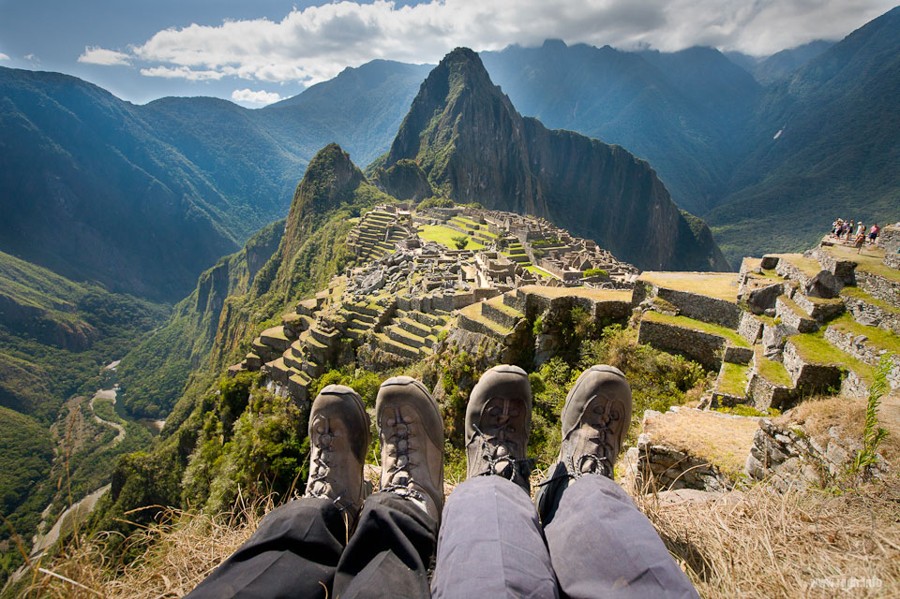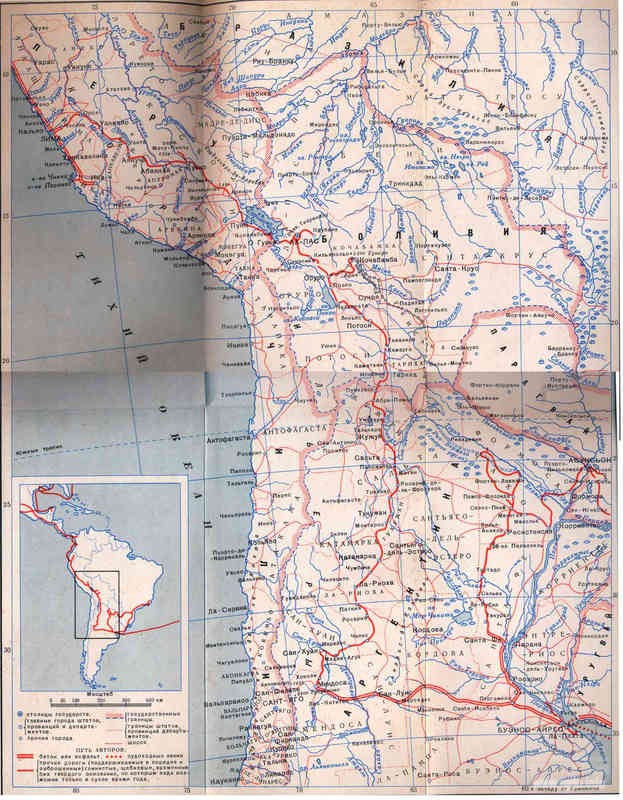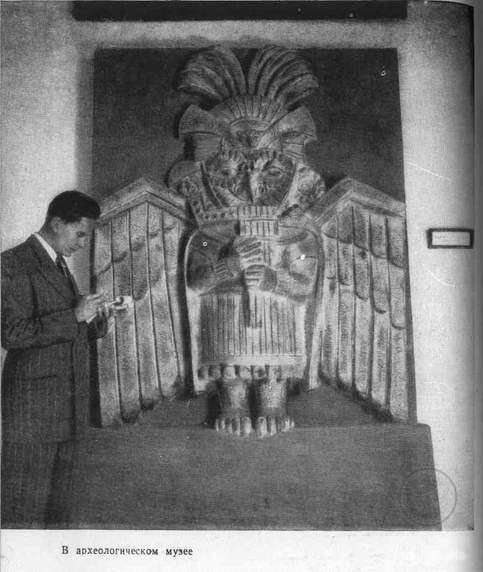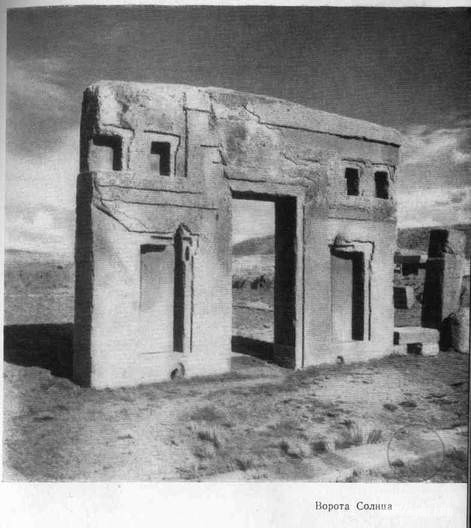Occasionally talking to different people, I often hear a deep-rooted opinion that humanity has always lived as we are now living – in incessant conflicts, competition and injustice; that such a way of life is natural, and it has never been otherwise. However, from the AllatRa book we know that destruction of numerous examples of peaceful, prosperous and culturally rich coexistence of various peoples in different times has been methodically carried out by henchmen of the Archons, and the terrible results of this we observe nowadays.
Such a distorted understanding should definitely be eliminated, therefore I kindly ask all readers who are interested in the subject to send us relevant materials they possess or might discover. Let us together collect the most extensive evidence base supporting that we, the mankind, could have lived in a proper, humanly manner in the past. At that, since humanity has managed to maintain such a way of living before, we certainly have real chances to create a true Golden Age, the Age of the Holy Spirit, when Peace and Love will reign on the planet Earth again, provided that we have a sincere desire and apply the Primordial Knowledge renewed in the current time of changes in the books by Anastasia Novykh and the programs with Igor Danilov’s participation.
In the context of the subject we discuss herein, I came across a very interesting extract in the book From Argentina to Mexico written by a duo of Czech journalists and adventurers Jiří Hanzelka and Miroslav Zikmund about their journey on a Tatra 87 car in the 1950s. I inherited this book, published in 1960, from relatives. For a long time it had been lying in my home library until I finally came to read it, and I should tell you it proved to be no less captivating than the wonderful books by Thor Heyerdahl who had carried out his major studies approximately in the same years. Let me cite a chapter relating to the duo’s journey around Peru, where we see a description of people’s life in the Inca Empire before they were conquered and exterminated by the Spanish invaders. By the way, on this website we wrote about the Inca civilization (who possessed and used the Primordial Knowledge) in the article In quest of... The 11th century. Sican and Inca civilizations. Part Three.

Yet, more information of such kind is never superfluous. On the contrary, it wouldn't be a bad thing for us to learn lessons of the past better, so let’s look into the past one more time. The chapter is entitled:
Only in the last decades, owing to the works by contemporary archaeologists, the mystery of the Inca Empire starts uncovering itself. Researchers prove that ancient Indian legends, devoid of any mythical character, contain a historically veracious core.
Numerous cultures emerged, blossomed and declined, both on the Pacific coast of present-day Peru and in the mountainous regions of South America, from the borders of Ecuador to the banks of Lake Titicaca, and some of those cultures achieved quite a high level of development.
Nine hundred years ago, the pastoral clan of the Incas who travelled from the banks of Lake Titicaca to the north occupied a fertile valley in the area of Cusco. The Incas adopted and enriched the earlier local culture they had inherited. Their talent for organisation was amazing, but their understanding of fair power and administration was no less striking. They were the founders of the first large empire which never enslaved subordinate peoples. The Incas enjoyed full rights in the annexed countries, yet remained ordinary citizens there, while local inhabitants had the rights in the empire, equal to those of the Incas.
Throughout the Incan lands, a network of roads expanded, connecting even the regions where people in the 20th century failed to get even with their advanced technologies.
The Incas proved to be masters in farming and developed agricultural production under very difficult conditions. Their irrigation systems survived over centuries, and their terraced fields reinforced with stone bulwarks on steep slopes still serve as a food source for Indian highlanders. The Incas were also excellent surgeons, mathematicians, architects, land surveyors, and astronomers. They didn’t know what money was. In their empire everyone worked according to their abilities and received everything they needed. Gold and silver were regarded as sacred metals, the gifts of the god of the Sun and the Moon, and were used for decoration of temples. At that, these metals had no exchange material value.
A cornerstone in the social foundation of the Inca Empire was the tribal community (ailyu) headed by an elective council of elders.
In his book The Epic of Latin America John A. Crow refers to the most important element in the Incan social system: he asserts that the driving force there was people’s joint labour for the benefit of everyone, but not competition for the sake of receiving profits. In the post-war book The Indians of the Americas (1947) John Collier, the former US Commissioner of Indian Affairs, says that before the Spaniards arrived the Incan land had been populated more densely than nowadays, and despite this fact “nobody was in need where today millions of people are in permanent poverty”.
In 1847, the American historian William H. Prescott released an extensive work on the history of the conquest of Peru. His words are so shameful for the contemporary rulers: “An impression arises that Inca government orders implied workers’ safety. The orders were developed in such a way that even the most difficult and unhealthy labour, e.g. at mines, did no harm to the workers’ health, which differs so dramatically from the later labour conditions in the time of Spaniards.”
At that, Joseph Korzhensky reveals for us the pictures of the Incas’ everyday life, sincerely admiring the deeply humane traditions of the ancient Indian state:
“The Inca dynasty established the empire and ruled it with great success.
Having united separate Indian tribes into a single community, for many centuries the dynasty ruled for its own benefit and the benefit of its subjects. The regnant clan and all the peoples ruled by it lived a patriarchal life like a single family. No subject could say he or she was poor. Arable lands belonged to all – to the Sun, the people, and the king. One third of the royal property was poor lands. A married man was entitled to his own land plot – tupu. If anyone’s posterity increased, a plot was allocated for him out of the lands ascribed to the Sun god. A plot once acquired could not be sold or devised to anyone but one’s children. There was no money. Subjects were obliged to work the land together and to help each other. First of all, the fields of the Sun god were cultivated, then the plots of poor, sick, elderly people, widows and orphans, then the land plots of other ordinary citizens, and finally the princely and royal lands. In the same sequence the harvest was reaped and poured into public granaries. One granary contained the harvest of the Sun god, the other one belonged to the society. From the first granary the expenses on religion, upkeep of priests and the Sun priestesses were refunded. From the royal stock bread was given to officials, soldiers and workers occupied at public sites. In case of a crop failure, the reserves of the Sun god were distributed. Livestock was owned by the king and the god only. They bred llamas and alpacas, using them as pack animals instead of cattle. They ate meat of domestic animals and weaved textiles of wool. The state itself took care of herds.
Like in ancient Egypt and China, the entire royal family was dealing with economy. In order to publicly show his respect for peasant labour, the king never missed a single rural festival, and used a plough in the presence of his entire court.
Nobody paid taxes, but people were obliged to participate in construction of roads, bridges, water supply systems and fortresses, as well as to be on mail service. Water was supplied to the fields from afar in abundance, so that the soil could be irrigated at any time.
A particularly adorable is the road running through the high Andes between Cusco and Quito, the city that now belongs to Ecuador and is famous for its enormous temple of the Sun and the Moon. In addition to this mountain road, another road ran along the coast.
Small fortresses protected citizens’ life and property. Especially durable structure was that of the large Saksaywaman fortress built of huge stone blocks. Its ruins still preserve samples of gigantic masonry. Special shelters were arranged for wanderers and mail couriers who rapidly delivered not only news, but also parcels with diverse viands and dainties for the royal kitchen. At festivals the Incas enjoyed music and theatre. The court youth performed dramas and comedies for the king.
No written monuments in our understanding have been preserved, because the Incas had no written language and used quipus (“talking knots”) instead. They depicted concepts with multicoloured woollen ropes and knots. Red signified a warrior or a war, yellow meant gold, white meant silver or peace, and green meant corn. One knot meant ten, while two knots next to each other meant twenty. In ancient times the knot script was also widespread in China.
The Incas loved peace and rest…”
Right before the Spanish invasion the Inca Empire covered an enormous territory of present-day Peru and Bolivia, from today’s Columbia to Northwest Argentina. The Incas managed to penetrate even into the tropical lowlands of the Amazon River basin.
Parts of this whole immense empire were connected via solid roads that still serve as a foundation for highways. Furthermore, its territory was covered with a dense network of footpaths thoroughly cobbled and passable in any weather. The footpaths were used by couriers who covered enormous distances to deliver knot-written messages, within an incredibly short time. They made their way from Cusco to present-day Quito and back within twenty days. In this area there’s no faster ground road even today. The famous Pan-American Highway, which in this area is still an embryo, is cut by Guayaquil Bay, while the Incas managed to lay a safe road there, passing straight through the central mountain mass.
***
When the Spanish conquistadors arrived, the two worlds, the two systems, the two world outlooks opposed each other here.
***
A single phrase in Columbus’s letter dated 1493 may characterise cordiality of the New World inhabitants: “They never reject any requests, no matter what you ask from them; on the contrary, they willingly share with everyone and treat everyone so kindly as if being ready to give their hearts.”
In conclusion let me say the following. Certainly, all of us know that the peace-loving Incas fell victims to avidity, cruelty, and thirst for gold and power of the Spanish strangers in the 15th century. At that, history knows many examples of how other advanced civilizations perished. Yet, for some reason it seems to me it is still possible to solve the issue of preservation of the society that is based upon prevalence of spiritual and moral values, taking into consideration the past experience and the Knowledge which will be revealed if the majority of mankind chooses a spiritual vector of development. After all, everything depends on us, the humans, and on our choice in favour of either the Spiritual or the animal nature.
Finally, we should take into account that we know nothing about the afterlife destiny of the Inca people who then perished in the unequal fight against the aggressive invaders. Perhaps, they gained spiritual freedom and continued living eternally, which became the true victory of Life over death despite their seeming defeat in this material world…

The route of J. Hanzelka’s and M. Zikmund’s journey

An illustration from the book

An illustration from the book
Prepared by Julia Matveyeva (Russia)
 People who lived happily. The Incas’ way of living
votes:
169
People who lived happily. The Incas’ way of living
votes:
169
|

Project Aim










Leave comment